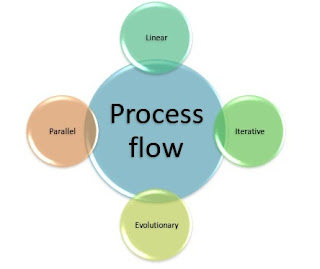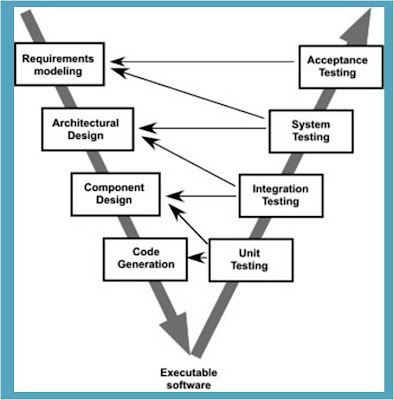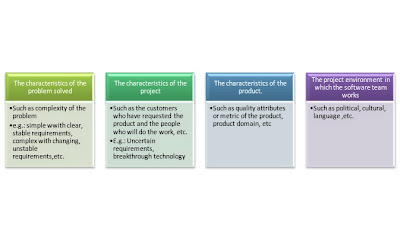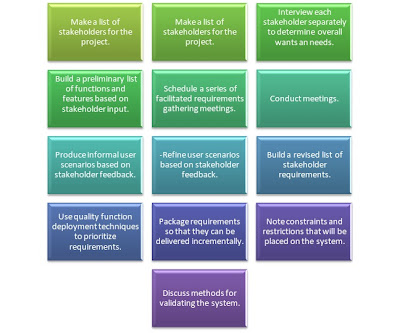
Little bit explanation about the type of process flow:
Linear process flow executes the framework activities in sequence, for example Identifying the issue -> gathering data -> studying all the options -> choosing one strategy -> implementing -> testing.
 Iterative process flow repeats one or more of the activities before proceeding to the next. It can also assist with revealing design goals of a client who does not know how to define what they want.
Iterative process flow repeats one or more of the activities before proceeding to the next. It can also assist with revealing design goals of a client who does not know how to define what they want.

Evolutionary process flow executes the activities in a ‘circular’ manner.

Parallel process flow executes one or more activities simultaneously with other activities.

A process pattern describes a process-related problem that is encountered during software engineering work, identifies the environment in which the problem has been encountered, and suggests one or more proven solution to the problem. Process pattern can be divide into three, which is
- Task process patterns
- Stage process patterns
- Phase process patterns
to read more about process pattern you can go to this link
Process Assessment and Improvement
There were several approaches that have been proposed over the past few decades ago to ensure that the software process meets a set of basic process criteria that have been shown to be a essential for a successful software engineering.

Waterfall Model – represents elements of a linear process flow


Incremental Model – combines elements of linear and parallel process flows

Evolutionary Model – follows the evolutionary process flow that combines elements of linear and iterative process flows
• Prototyping
• Spiral


Spiral
Concurrent Model – combines elements of iterative and parallel process flows


Task Set
A task set defines the actual work to be done to accomplish the objectives of a software engineering action. For example, ” requirements gathering” is an important software engineering action that occurs during the communication activity. The goal of requirements gathering is to understand what various stakeholders want from the software that is to be built.
For a small, relatively simple project, the task set for requirements gathering might look like this :


No comments:
Post a Comment